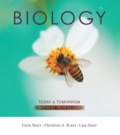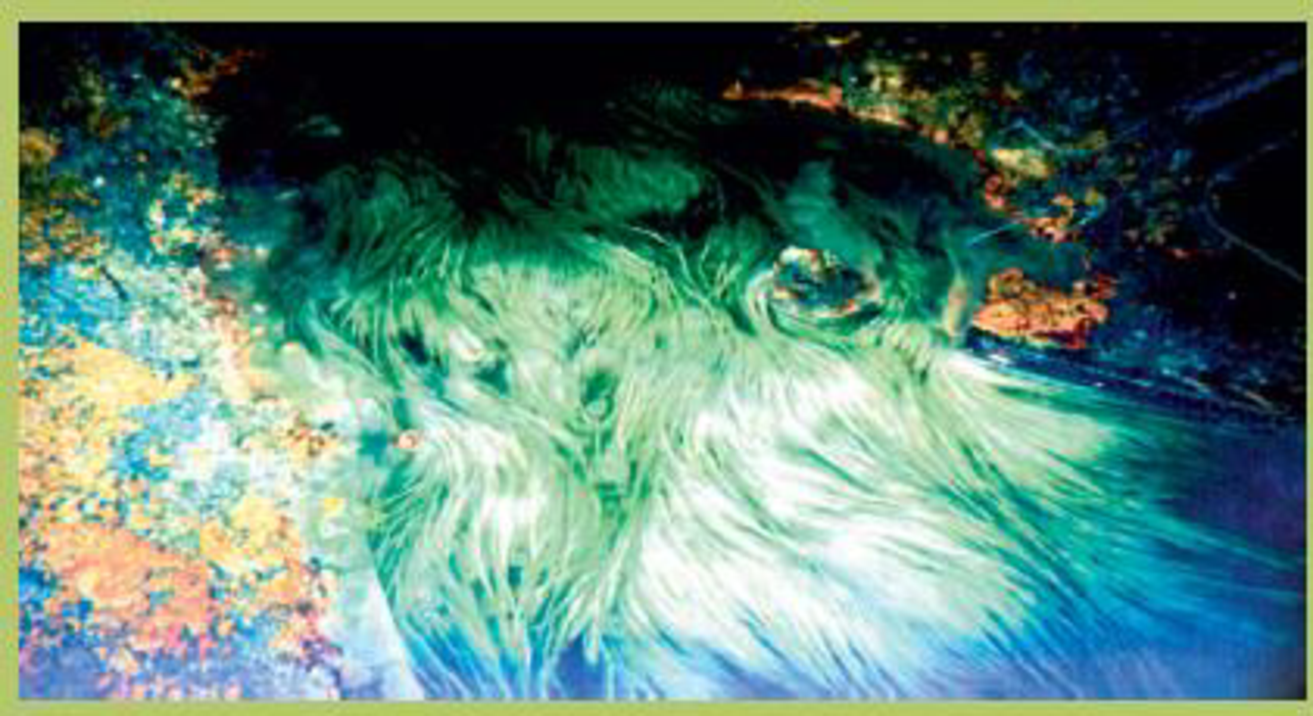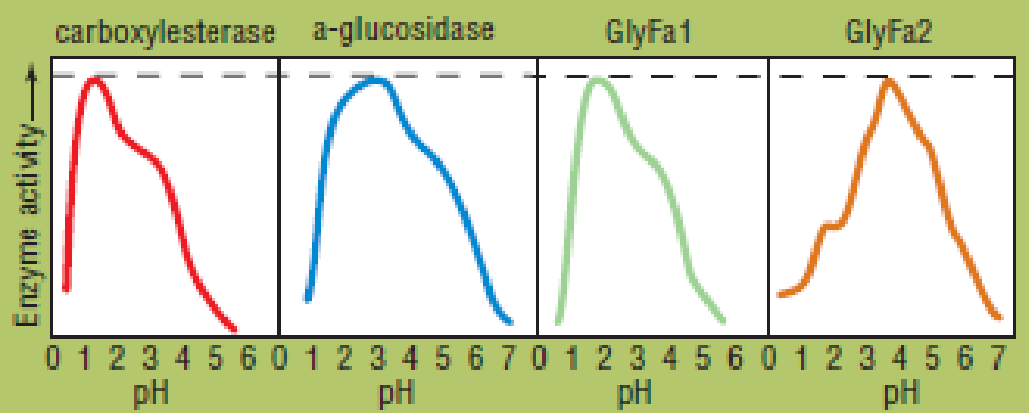
Concept explainers
The genus Ferroplasma consists of a few species of acid-loving archaea. One species, F. acidarmanus, was discovered to be the main component of slime streamers (a type of biofilm) deep inside an abandoned California copper mine (Figure 4.11A).
F. acidarmanus cells use an ancient energy-harvesting pathway that combines oxygen with iron–sulfur compounds in minerals such as pyrite. This reaction dissolves the minerals, so groundwater that seeps into the mine ends up with extremely high concentrations of metal ions such as copper, zinc, cadmium, and arsenic. The reaction also produces sulfuric acid, which lowers the pH of the water around the cells to zero.
Despite living in an environment with a composition similar to hot battery acid, F. acidarmanus cells maintain their internal pH at a cozy 5.0. Thus, researchers investigating Ferroplasma

A. Deep inside one of the most toxic sites in the United States: Iron Mountain Mine, in California. The water in this stream, which is about 1 meter (3 feet) wide in this photo, is hot (around 40°C, or 104°F), heavily laden with arsenic and other toxic metals, and has a pH of zero. Slime streamers growing in it are a biofilm dominated by a species of archaea, Ferroplasma acidarmanus.

B. pH profiles of four enzymes isolated from F. acidarmus. Researchers had expected these enzymes to function best at the cells’ cytoplasmic pH (5.0).
What does the dashed line signify?
Trending nowThis is a popular solution!

Chapter 4 Solutions
EBK BIOLOGY TODAY AND TOMORROW WITHOUT
- Which is true regarding bacterial and archaea species that use nitrogen and sulfur compounds in different ways? A) O Sulfate-reducing bacteria are those that respire anaerobically using sulfate. B) O Nitrifying bacteria are lithotrophs that produce nitrite and nitrate. C) O Denitrifying bacteria are those that respire anaerobically using various oxidized forms of nitrogen. D) O Sulfur oxidizing bacteria are lithotrophs that obtain energy from sulfur compounds either aerobically or anaerobically E) O All the above are true.arrow_forwardE. coli cells require organic compounds, such as glucose as its carbon and energy source, and prefer to live in an fully oxygenated environment. Which of the following is the most accurate way to describe E. coli based on its trophic properties? O Chemolithoautotroph Phototroph Anaerobic bacterium O Chemoorganoheterotropharrow_forwardA chemolithoautotroph is respiring using only iron (Fe3+) and nitrite (NO2-). This bacterium does not consume organic molecules. How does this organism make proton motive force?arrow_forward
- Bacteroides is the predominant genus of bacteria found in the human gut microbiota. As anaerobic bacteria, Bacteroides undergo fermentation in the gut, converting otherwise nondigestible carbohydrates into fermentation products that are used by the host for energy. Which of the following toxins would be most likely to disrupt carbohydrate metabolism in Bacteroides species? * a toxin that inhibits the function of ATP synthase a toxin that prevents the formation of Krebs cycle products a toxin that inhibits the function of an enzyme during glycolysis a toxin that breaks down the membrane proteins of the electron transport chainarrow_forwardWhich of the following statements is false regarding the electron donors in prokaryotic metabolism? A) O The use of organic compounds as electron donors is known as chemo-organotrophy. B) OLithotrophy refers to the use of inorganic molecules as electron sources. C) O Photolysis of water provides electrons to phototrophic organisms such as cyanobacteria. D) O Electrons can be obtained from inorganic chemicals such as H2S. E) O Oxygen can serve as an electron donor.arrow_forwardWhy can’t larger multicellular organisms live in the same places as these archaeans?arrow_forward
- Clostridium perfringens bacteria, which can survive and grow on frostbitten human tissues, but only in the complete absence of oxygen gas, are properly categorized as: anaerobic autotrophs facultative autotrophs anaerobic heterotrophs aerobic heterotrophs aerobic autotrophsarrow_forwardWhat is the role of oxygen in aerobic respiration? What type(s) of metabolism can occur in the absence of oxygen? Name two enzymes that are present in obligate aerobes but lacking in obligate anaerobes. What is the function of each enzyme Describe the difference between the appearance of surface and subsurface colonies in a pour plate. If this is the same bacterial species, why do these differences in colonial growth occur?arrow_forwardYeast are facultative anaerobic organisms that can make ATP by aerobic respiration if oxygen is present, but are also capable of switching to fermentation under anaerobic conditions. For thousands of years, humans have used yeast, such as Saccharomyces cervesisiae, to ferment grapes (starch sugar) to make wine (alcoholic beverage). Four batches of wine were made following the contents and conditions listed in the table below, Contents and Conditions of Four Batches of Wine Yeast Solution Water Grape Solution Batch Added Container (L) (L) (L) Lid 1 40 0.0 8 оpen 2 40 0.2 8 closed 40 0.2 8. оpen 4 40 0.2 closed 9. The yeast (Saccharomyces cerevisiae) would produce the greatest amount of ATP is the batch of wine numbered 1 4 D. The highest alcohol (ethanol) content would be found in the batch of wine numbered 02 3arrow_forward
- E. coli, a facultative anaerobe, is grown for 24 hours on the same type of solid medium, but under two different conditions: one aerobic, the other anaerobic. The size of the colonies would bea) the same under both conditions.b) larger when grown under aerobic conditions.c) larger when grown under anaerobic conditions.arrow_forwardOnly select prokaryotic organisms can harvest energy from food by oxidative phosphorylation, but can do this in the absence of oxygen. These organisms are using: a) Aerobic respiration b) Carbon fixation c) Fermentation d) Anaerobic respiration e) Photophosphorylationarrow_forwardWhy do chemotrophs have to use oxygen? The definition of chemotrophs is = organisms that gain chemical energy by oxidizing bonds. Do the organisms have to oxidize bonds using oxygen?arrow_forward
 Biology Today and Tomorrow without Physiology (Mi...BiologyISBN:9781305117396Author:Cecie Starr, Christine Evers, Lisa StarrPublisher:Cengage Learning
Biology Today and Tomorrow without Physiology (Mi...BiologyISBN:9781305117396Author:Cecie Starr, Christine Evers, Lisa StarrPublisher:Cengage Learning

